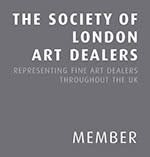Urban Rhythms: Walkowitz and New York City
"To capture the essence of a movement, one must understand its flow and rhythm; only then can you truly make it come alive on the canvas.” - Abraham Walkowitz
In New York, in the mid 1910s and through to the 30s, Walkowitz undertook a series of experimental abstractions. His drawings represented his response to rhythm, movement and the energy of New York in the 20th Century itself. These small works took on an angular fashion inspired by the Cubist works of Picasso and Braque. However, he was determined to carve out his own path, despite being proud of his contemporaries, he never wanted to imitate them. “It is not putting flowers on their graves, but putting manure,” he once stated. Nevertheless, similarities can be observed between the organic patterns of his billowing forms and those of other American and European modernists.
From 1907 to 1913, Alfred Stieglitz exhibited a range of young European and American artists at his gallery '291’, whom he believed very passionately would have a significant impact on modern art. Walkowitz became one of these carefully selected artists. Walkowitz, alongside John Marin, Marsden Hartley, and Arthur Dove were known affectionately as the Stieglitz quartet.
With another groundbreaking show for American modernism in London, JC Gallery showcases Abraham Walkowitz’s pure abstraction and cityscape works that contributed to the development of the modernist movement.



